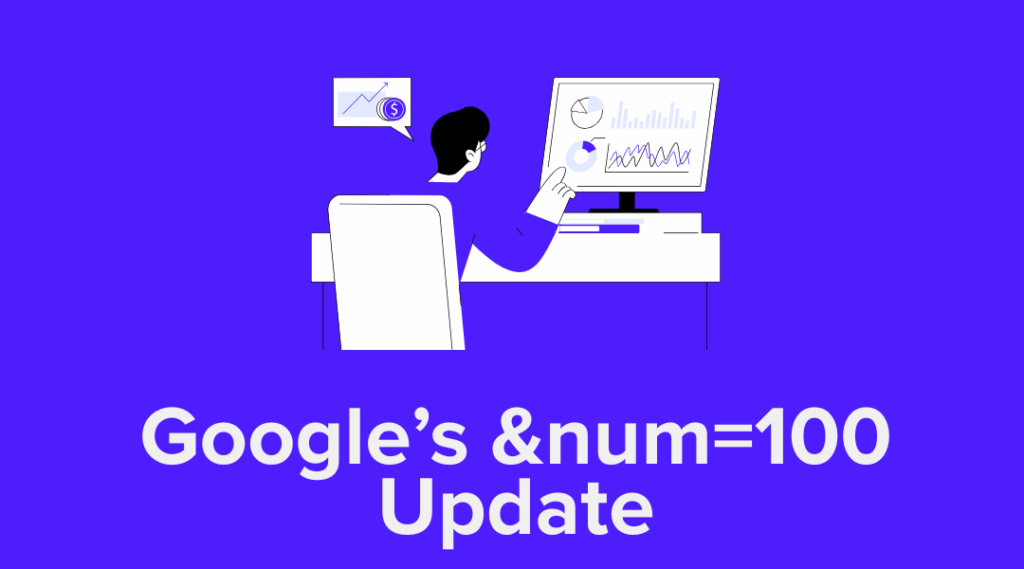Summary:
SEO and ABM are often seen as competing strategies—one broad and inbound, the other narrow and outbound. But in today’s AI-first landscape, they’re more aligned than ever. SEO builds visibility, trust, and relevance across every stage of the account journey, surfacing content in AI tools, influencing buying committees, and supporting sales enablement. When paired with ABM, it creates scalable reach without sacrificing precision.
Account-Based Marketing (ABM) is all about precision: reaching the right people at the right companies with personalized messages that convert. SEO, on the other hand, is often seen as a broad, intent-driven channel that casts a wider net designed to attract anyone and everyone searching on Google.
Traditionally, that’s led to tension: ABM is targeted; SEO is scalable. ABM is outbound; SEO is inbound. But the digital landscape is shifting. With AI Overviews, LLM-powered tools like ChatGPT, and new search experiences reshaping how people find information, the line between inbound and outbound is blurring. What if SEO and ABM weren’t in conflict, but actually amplified each other?
For B2B brands that want to build pipelines and increase efficiency across marketing and sales, integrating SEO into an ABM strategy can drive compounding results. In this article, we’ll reframe the tension between ABM and SEO, show how the two strategies actually complement each other, and break down tactical ways to make SEO part of your ABM playbook—especially in an AI-first world.
What is ABM and why are B2B brands adopting it?
Account-Based Marketing (ABM) is a targeted approach to B2B marketing that involves sales and marketing teams collaborating to target best-fit accounts, typically enterprise-level or high-value prospects, with personalized campaigns.
Rather than generating a high volume of generic leads, ABM focuses on:
- Identifying best-fit, high-revenue accounts,
- Creating tailored content and messaging for specific personas, and
- Aligning sales and marketing goals and measurement.
The benefits of ABM for B2B include:
- Higher deal sizes: ABM targets accounts with higher revenue potential.
- Shorter sales cycles: Personalization accelerates decision-making.
- Better alignment: Sales and marketing teams share ownership of results.
It’s no surprise that many B2B brands, especially those in SaaS, healthcare, and enterprise services, are moving toward ABM models. But SEO can play a key role in ABM models—when it’s done right.
Common points of tension between SEO and ABM
While SEO and ABM both serve lead generation and revenue growth, they often operate in silos. Here’s why they’re frequently seen at odds:
1. SEO is intent-based; ABM is account-based
SEO targets search behavior, aiming to capture interest from anyone who types in a relevant query. ABM, by contrast, zeroes in on specific companies and personas—regardless of whether they’re searching yet.
Misconception: “SEO is only useful for inbound.”
Reality: Modern SEO supports every stage of the journey—from early research to decision—and shows up when buyers are asking questions in tools like Google, ChatGPT, or Gemini.
2. SEO is broad; ABM is narrow
SEO strategies are often designed to drive scalable traffic. That can seem misaligned with ABM’s hyper-focused approach. But high-performing SEO doesn’t mean writing for everyone—it means writing the right content for the right people.
Misconception: “SEO can’t be personalized.”
Reality: With topic clusters built around verticals, job roles, and use cases, SEO can deliver tailored content aligned with ABM campaigns.
3. SEO is long-term; ABM wants results now
SEO is a long game. ABM campaigns often have shorter timelines tied to quarterly goals or sales sprints. This can lead teams to prioritize channels with faster feedback loops.
Misconception: “SEO doesn’t support short-term goals.”
Reality: SEO data can help prioritize campaigns and messaging for ABM accounts, and ABM can accelerate SEO traction by boosting engagement on targeted content.
The new reality: search behavior has changed
Buyers don’t just Google anymore. They explore vendors in ChatGPT, browse summaries in Google’s AI Overviews, ask for comparisons in Perplexity, and rely on AI assistants (we see you, AI Mode) throughout the decision journey.
This shift means SEO is no longer just about ranking a page, it’s about showing up as a trusted source across AI-driven discovery tools. And that’s where a strong SEO–ABM integration shines.
SEO today isn’t just keyword-driven. It’s entity-driven. The more your brand, solutions, and subject matter are associated with specific topics and industries, the more likely AI tools are to surface your content when target accounts are searching, whether in a browser or an LLM.
Learn more: How Entity Optimization Strengthens Your Digital Marketing →
Key benefits of integrating SEO into ABM campaigns
When done right, SEO becomes a powerful tool for fueling ABM campaigns and extending their reach.
Expand visibility with target accounts
Your target buyers are still Googling—even if they’re not clicking your ads or opening your emails. SEO ensures your brand shows up when they’re searching for solutions, helping you reach them beyond the inbox or cold outreach.
Build trust with relevant, helpful content
SEO-optimized blog posts, guides, and resources create multiple touchpoints for your brand. When accounts encounter your content while doing independent research, it builds credibility before sales ever enters the conversation.
Support sales with on-demand content
SEO content is often evergreen and built around real buyer questions. Sales teams can use this content to follow up, educate, or nurture prospects, without having to create something new for every touchpoint.
How SEO closes the gaps in your ABM strategy
Most ABM strategies are laser-focused, but that narrow focus can leave blind spots. SEO fills those gaps by surfacing insights you didn’t know you were missing and creating scalable content that complements 1:1 efforts.
Here’s what SEO can do to support and strengthen ABM initiatives:
1. Improve campaign targeting
SEO data (like keyword trends and search intent) helps refine your ABM messaging. It can uncover what prospects care about most, so your team isn’t relying solely on assumptions or anecdotal feedback.
SEO may not directly target an account list, but it helps influence the buying journey long before your sales team reaches out, and long after they’ve made contact.
2. Capture early-stage interest
Before your SDR emails land, prospects are researching. SEO ensures your brand appears when they first start asking questions, whether in Google or AI chat.
3. Educate the buying committee
ABM deals can involve as many as 6–10 stakeholders. SEO content supports the entire committee—helping your champion make the case internally.
4. Influence brand familiarity
Even if SEO isn’t the first touch, it builds recognition. When a stakeholder sees your brand pop up in search or AI answers repeatedly, your outreach later feels warmer and more credible.
How SEO content fuels the ABM approach
Content is where ABM and SEO intersect most powerfully. The goal isn’t mass appeal—it’s smart content that maps to account priorities, personas, and problems.
Create content that aligns with ICP pain points
Build topic clusters around specific industries, roles, or use cases. For example, if your ICP includes IT directors in healthcare, your SEO strategy might include:
- Blog posts on HIPAA-compliant cloud solutions
- Comparison content featuring alternatives to legacy systems
- Guides tailored to healthcare procurement processes
Repurpose SEO content as sales enablement
Use SEO content in your ABM workflows:
- Link to relevant blog posts in sales emails
- Use SEO landing pages as destinations for LinkedIn ads
- Repurpose articles into shareable one-pagers for outreach
Learn more: SEO + Email: A Conversion Driving Duo →
Keep accounts returning
ABM gets them in. SEO brings them back. When a decision-maker receives an email and later searches a related topic, your blog post or guide reinforces your positioning, without requiring a cold touch.
By creating topic clusters aligned to verticals, use cases, and job roles, SEO can:
- Surface content when target accounts are searching,
- Provide sales teams with personalized resources, and
- Support long-tail keywords tied to specific pain points.
How SEO and ABM align across the funnel
ABM isn’t a one-touch play. It’s a multi-stage journey that benefits from content tailored to different roles, use cases, and moments. Here’s how SEO content fits into ABM tactics across the full funnel:
| Funnel Stage | ABM Tactic | SEO Contribution |
| Awareness | LinkedIn Ads, Display | Top-of-funnel blog posts, thought leadership |
| Consideration | Email Outreach, Webinars | Mid-funnel guides, solution pages, comparison content |
| Decision | 1:1 Sales Outreach, Custom Offers | Bottom-funnel content, SEO-optimized landing pages |
| Post-sale | Success Stories, Customer Marketing | Case studies, support articles, loyalty-driving content |
SEO and ABM—they’re better together
SEO and ABM both work best when content is aligned to the customer journey. The difference is in scale and targeting. ABM delivers precision. SEO delivers visibility. Together, they help:
- Ensure your message reaches the right accounts (even when they’re not ready to talk to sales)
- Create a connected experience across search, social, and sales outreach
- Turn content into a growth engine—not just a traffic driver
When B2B companies stop viewing SEO as just a top-of-funnel play, it becomes clear: search visibility supports every stage of the account journey.
Real-world alignment: how SEO supports ABM at Zipit Wireless
Zipit Wireless is a B2B company that delivers high-data IoT connectivity solutions. Their marketing team runs highly targeted ABM campaigns aimed at enterprise buyers across numerous industry sectors.
To support this, we developed an SEO content strategy rooted in:
- SME led blog content that addressed complex IoT data needs,
- SEO-optimized solution pages aligned to specific use cases and verticals, and
- Long-form pillar pages that doubled as gated content for ABM campaigns.
Result: Organic content drove high-intent traffic, served as follow-up material for sales, and reinforced Zipit's positioning in outbound campaigns. It also surfaced repeatedly in branded and non-branded searches from target accounts—supporting both discovery and conversion.
How to measure SEO’s role in ABM campaigns
Attribution isn’t always clean, especially in a world of AI-driven, zero-click results. But there are several ways to track SEO’s impact on ABM performance:
- Track account-level engagement: Use your CRM (like HubSpot) to track when known accounts visit your site via organic search.
- Look for content-assisted conversions: Which blog posts show up in the journey before a demo request? Use multi-touch attribution to spot patterns.
- Monitor branded search lift: Effective SEO content often drives an increase in branded searches from your ABM accounts.
- Don’t overlook referral traffic: As LLMs, agentic search tools, and deep research platforms continue to grow, brand citations in these environments can generate valuable referral traffic—even when there’s no traditional click path involved.
SEO isn’t separate from ABM. It’s your strategic advantage
If you’ve been treating SEO as purely top-of-funnel or mass-market, it’s time to shift your thinking. A modern SEO strategy helps your ABM campaigns:
- Reach the right buyers—even outside your CRM
- Show up in search, AI assistants, and research tools
- Build trust across multiple stakeholders and buying stages
Best of all? SEO compounds. When you align your ABM messaging with strategic organic content, every campaign gets smarter, more discoverable, and more efficient.
Want to align your SEO with ABM and stop leaving pipeline on the table? Let’s talk →
You might also like:





